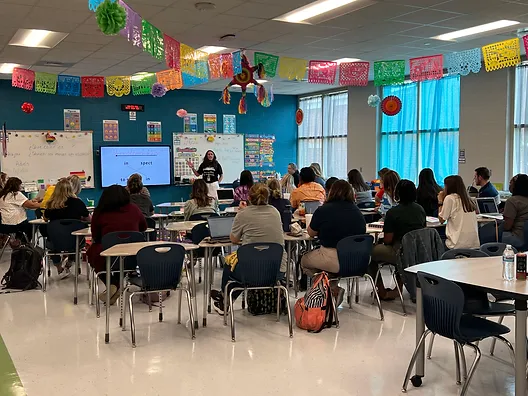Morphology Magic
- Tosha Swearingen
- Feb 1, 2023
- 3 min read
This school year, MCS implemented the new 2021 Alabama English Language Arts Course of Study. The new standards are grounded in the science of reading, which is a body of research on how the brain learns to read. This research provided guidance on the structuring of the standards that explicitly define content to support students as they learn to become proficient readers. These new standards place a heavy focus on teaching morphological structure of words especially in 3rd-5th grades.
What is morphology? Morphology is the study of meaningful units of language and how the units are combined in word formation. Teaching morphology helps improve both spelling and vocabulary. Increased vocabulary helps with deep comprehension.
MCS started the school year with professional learning to help support teachers with morphology instruction. Each 3rd-5th grade teacher received a morphology deck containing prefixes, roots, and suffixes to incorporate during instruction. Follow up professional learning has been offered as well as support from the local school reading coaches.
The English language is made up of Anglo-Saxon (25%), French (4-5%), Latin (55%) and Greek (11%). We begin teaching many of those Anglo-Saxon prefixes in our lower grades (ex. un- meaning not). Using knowledge of the frequency these prefixes occur, the MCS Instruction Team mapped out a pacing for 3rd-5th grades to include the most common prefixes, suffixes, and roots. The MCS Instruction Team plans weekly lessons that follow the Orton-Gillingam approach to include multisensory instruction. We teach the prefix, a key word, and meaning all together. For example, -struct- is a Latin root. We would say, “-struct-structure- to build” as students see the card from the deck. Many teachers include motions to help students remember. For “-struct-structure- to build”, students might use their hands as if they are building a structure as they recite the rime. The morphology lesson includes: introduction of the rule, reading words, spelling words, and using in a sentence. There are also many real-life picture examples to help students make connections with the new learning. As students start to learn more meaningful parts, they are able to define and make meaning of unknown words. For example, let’s look at the word extraction. Extraction has the prefix ex- meaning “ex-exit-out”. It has the Latin root -tract- meaning “-tract-traction-to pull”. It has the Latin suffix -tion meaning “-tion, operation- the act of”. Using that knowledge, the student could define the word as: the act of pulling out. Some questions to connect to learning might be: have you ever had a tooth extracted? What tools might a scientist use to extract fossils from the ground?
MCS teachers are finding creative ways to make morphology instruction meaningful and engaging for students. Heritage 3rd grade teacher Beth Mattingly had students create a spiral notebook with 3 sections to represent the prefix, root, and suffix. Students flip the pages allowing different prefixes/root/suffixes to work together creat ing words. Mattingly said, “ What has been empowering is when the students 'see' a new word and get excited. It's fun to watch them try to create new words too. They then get super excited to figure out what it means based on the pre/root/suffix. It's great when we are reading and they start noticing words with the prefix/suffix and get excited. I'm excited because they are more aware. Ultimately the end goal will be reached when they come across words as they progress in their reading growth and can figure them out thanks to the lessons we provided.”


















